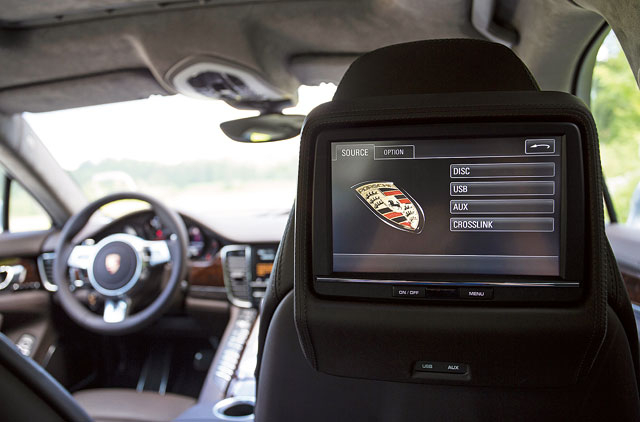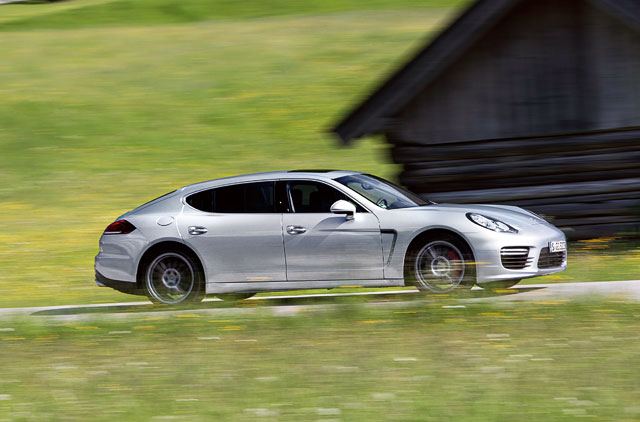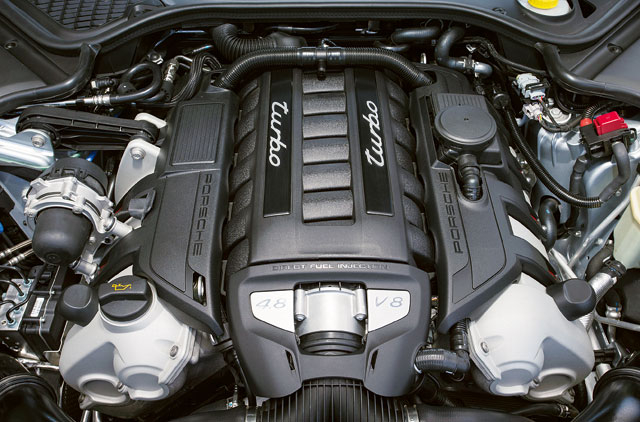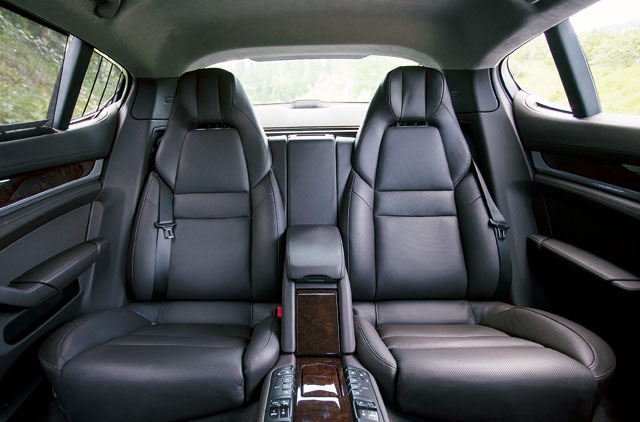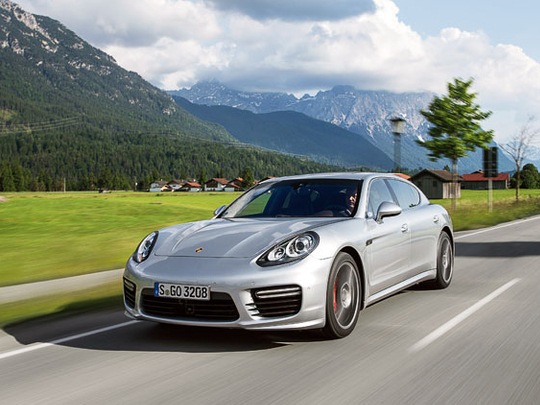
If somebody blindfolded me and took me out for a spin in the Turbo there is no way I’d ever imagine I was in a saloon.
Within a few minutes of driving this car you will forget all about the rear doors; the tiny trapezoidal mirror cannot fully reveal the back seats; you will completely disregard the screams of your flailing children. This is simply a sportscar that happens to accommodate four passengers.
At between 180 and 200kph on the gently meandering autobahn, in the wet, the Panamera is stubbornly secure. The steering wheel faintly quivers, which I can put down only to the road surface — such is the Panamera’s assured build quality and road-holding that it can’t be because of the car. On the other hand, the digital readout does display 200kph, and when is the last time you drove in complete serenity at that speed?
Another striking realisation comes at me when I comprehend that there’s three-quarters of throttle pedal travel left. All the time. I’m merely twitching my big toe and the Turbo accelerates from 120kph to beyond 180 with the PDK doing naff all, and with a seamless gush of torque that summons wormholes in the car’s path.
It’s appropriate that I’ve recently returned from Japan where I remarked to my hosts how the Shinkansen (that would be the Bullet train) feels amazingly smooth at 220kph, with minimal vibrations, with such composure through the bends. Well the Panamera Turbo is smoother, with even fewer vibrations and more composure. And the train is literally on rails. You can think of the Panamera as a Maglev, then.
Something may have been amiss with the tyres on my Turbo Executive (they looked small, quite unacceptably small by Dubai standards. In fact somebody could think you’re merely driving a 4S. Go throw a tantrum at the dealership…) but in the pouring rain perhaps I was expecting too much, pitching the Panamera into hairpin turns with wanton indifference for safety. With all-wheel drive and the car’s stability and traction-control systems, the Turbo grips during enthusiastic driving with no let up, but whenever you push your luck just that little bit more, the front end scrubs off wide and tucks in only on quick throttle lift-off.
With traction control off, the nature of the Panamera immediately changes, with even fast, flowing esses revealing an ever so slight wiggle at the back. You feel it through the subtly tugging steering wheel and you feel it through the low-slung seat. Look, there is a lot of real estate between you, the driver, and that rear axle way out there in the stretched wheelbase of this Executive model, and yet you can read everything and receive all of the car’s intentions. That’s pretty amazing.
The 15cm-longer Executive model no doubt adds to the car’s steely high-speed stability, but to relax the driver to such an invulnerable state of mind — in the wet, in case I haven’t said that already — is nothing short of astonishing.
On standard 19in Panamera Design II wheels in a lightweight five dual-spoke look and riding exclusively on air suspension, the Executive loses little of its agility in tighter turns. The driver sits low with perfect reach of all the controls and unobstructed outward vision, with ideal reference points outside thanks to the visible sloping bonnet and tall wheel arches. You could place this 5,165mm-long and 1,931mm-wide behemoth on a one dirham coin.
It rides perfectly fine too; it’s no LS 460, but then again a Lexus can’t make an Alpine peak feel a bit inadequate. And this is still in reference to the long-wheelbase Panamera, you know, the one that weighs 100kg more than the standard models.
Porsche Panamera S E-Hybrid driven in Germany
The Executive is important for Porsche because China can’t get enough of Panameras as it is, devouring one-third of all vehicles built since 2009. The company delivered 29,000 examples last year — after the initial projection of 20,000 annual sales — and it’s looking to at least stay there.
With individual rear bucket seats, silent soft-close doors, extra insulated windows and 12cm extra legroom, not to mention the myriad Porsche options (although more equipment now comes as standard on the new range), there is a Panamera Executive for all the favoured children of the Communist Party of China.
And it’s not just the hybrid that improved its efficiency by more than 50 per cent, or the 20bhp-stronger Turbo that have received updates. The S, 4S and GTS all ditch their naturally aspirated V8s for a brilliant new twin-turbocharged V6 that’s more powerful, more flexible and more economical than before. We’ll miss the GTS’s manic sprint towards the red line, again and again, but Porsche is quick to point out that it first launched a turbocharged road car in 1973 and now 40 years on their technological breakthrough is at an evolutionary peak.
I had a brief go in the S because it was hard to tear myself away from the Turbo, and the V6 engine is brilliant, the PDK is superb and the braking and the rear-wheel-drive chassis and everything else.
It’s an incredible piece of sports saloon engineering. And it still looks like a pregnant manatee.


